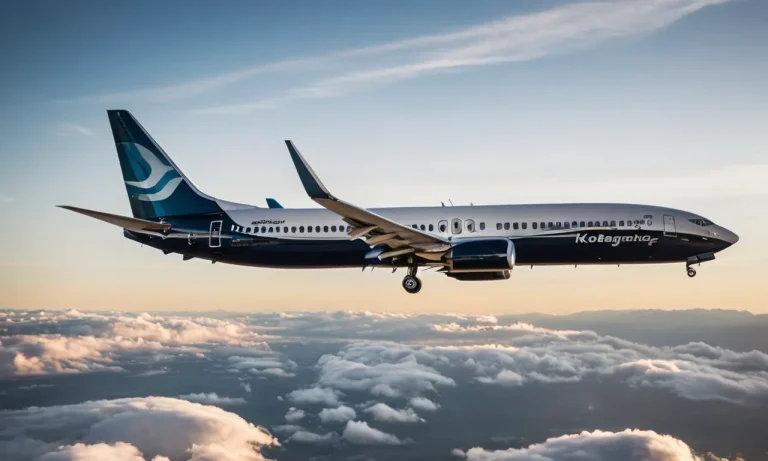Which Airline Has The Best Pilots?
When booking a flight, most travelers focus on factors like ticket price, departure times, and extra legroom. But one crucial element often gets overlooked: the skill of the pilots. After all, your life is in their hands once that plane door seals shut.
If you’re short on time, here’s the quick answer: Former military pilots working for U.S. airlines tend to have the most training and flight hours, meaning major U.S. airlines like Delta and United score very highly for pilot quality.
This article will analyze training requirements, experience levels, safety records, and pilot work conditions across over a dozen major airlines worldwide. Read on to see which carriers boast the top aviators in the skies.
Pilot Training and Flight Experience
When it comes to determining which airline has the best pilots, a crucial factor to consider is their training and flight experience. This is what sets apart the truly exceptional pilots from the rest.
Let’s delve into the key aspects of pilot training and flight experience that contribute to the competency of airline pilots.
FAA Requirements
All pilots in the United States must meet the Federal Aviation Administration (FAA) requirements to obtain their pilot’s license. These requirements include a minimum age of 16 to obtain a student pilot certificate, a minimum of 40 flight hours for a private pilot license, and additional ratings and certifications for more advanced licenses.
The FAA ensures that pilots receive thorough training and are knowledgeable in areas such as aircraft systems, navigation, weather conditions, and emergency procedures.
Military vs. Civilian Training
Some pilots receive their training through military programs, while others go through civilian training. Both paths have their advantages and produce highly skilled pilots. Military training provides pilots with rigorous and disciplined training, exposure to a wide range of aircraft, and valuable experience in high-pressure situations.
On the other hand, civilian training allows pilots to specialize in specific types of aircraft and gain a deep understanding of commercial aviation operations. Ultimately, the quality of the training program and the individual pilot’s dedication and skills matter more than the path they took to become a pilot.
Flight Hours
The number of flight hours a pilot has is another important factor in determining their experience and skill level. The more hours a pilot has, the more exposure they have had to various flying conditions, airports, and aircraft.
Many airlines require a minimum number of flight hours for their pilots, usually in the range of 1,000 to 1,500 hours. However, it’s important to note that flight hours alone do not guarantee pilot proficiency.
Quality training and ongoing education are essential for maintaining and enhancing skills throughout a pilot’s career.
Ongoing Training and Checks
Pilots undergo regular training and checks to ensure they stay up-to-date with the latest aviation regulations and procedures. This includes simulator training, recurrent training, and proficiency checks. Airlines invest heavily in ongoing pilot education to enhance their skills and knowledge.
This continuous training helps pilots stay sharp and well-prepared for any situation they may encounter in the cockpit. It is through this ongoing training that airlines can ensure their pilots remain at the top of their game.
Airline Safety Records
When it comes to evaluating the skill and competence of pilots, one of the key factors to consider is the airline’s safety record. This record is a reflection of the airline’s commitment to ensuring the safety of its passengers and crew.
By analyzing the airline’s safety record, we can gain valuable insights into the effectiveness of their safety management systems and the overall culture of safety within the organization.
Accidents and Incidents
An important aspect of evaluating an airline’s safety record is examining its history of accidents and incidents. While no airline is immune to unforeseen events, a low number of accidents and incidents can indicate that the airline has effective safety protocols in place.
It’s worth noting that accidents and incidents can vary in severity, so it’s important to consider the context and circumstances surrounding each event.
According to the International Civil Aviation Organization (ICAO), the global accident rate has been steadily decreasing over the years, thanks to advancements in technology and improved safety practices.
However, it’s important to note that individual airlines can still have variations in their safety records. By consulting reputable aviation safety databases like the Flight Safety Foundation or the National Transportation Safety Board (NTSB), passengers can access detailed information about an airline’s safety incidents and assess their significance.
Safety Management Systems
A strong safety management system (SMS) is essential for an airline to maintain high safety standards. An SMS is a systematic approach to managing safety, encompassing organizational structures, policies, procedures, and practices.
It allows for the identification and mitigation of potential risks, ensuring that safety is a top priority at all levels of the airline.
Many airlines have implemented comprehensive SMS programs based on guidelines provided by regulatory bodies such as the Federal Aviation Administration (FAA) or the European Union Aviation Safety Agency (EASA).
These programs often include safety reporting mechanisms, safety training for employees, and regular safety audits. By examining an airline’s SMS and its adherence to industry standards, passengers can gain an understanding of the airline’s commitment to safety.
Pilot Fatigue
Pilot fatigue is a significant concern in the aviation industry, as it can impair a pilot’s ability to make critical decisions and respond to unexpected situations. Fatigue can be caused by factors such as long duty hours, irregular schedules, and insufficient rest periods.
To address this issue, regulatory bodies have established rules and regulations to limit pilot duty times and ensure adequate rest periods between flights.
Passengers can refer to sources such as the FAA or the EASA to learn more about an airline’s policies and procedures regarding pilot fatigue management. By choosing airlines that prioritize pilot well-being and adhere to these regulations, passengers can increase their confidence in the airline’s commitment to safety.
Pilot Lifestyle and Working Conditions
Being a pilot is not just a job, it’s a lifestyle. Pilots have unique working conditions that set them apart from other professions. Let’s explore some of the factors that contribute to a pilot’s lifestyle and working conditions.
Pilot Unions
Pilot unions play a crucial role in ensuring fair working conditions for pilots. These unions negotiate with airlines on behalf of the pilots, advocating for better pay, improved safety measures, and reasonable working hours.
The collective bargaining power of pilot unions helps maintain a healthy work-life balance for pilots, making it easier for them to manage their personal and professional lives.
Salaries and Benefits
Pilot salaries and benefits are often a major consideration for those aspiring to enter the profession. While the exact figures may vary depending on factors such as experience, seniority, and the type of aircraft flown, pilots generally enjoy attractive compensation packages.
According to a report by the Bureau of Labor Statistics, the median annual wage for airline pilots, copilots, and flight engineers was $147,220 in May 2020.
In addition to competitive salaries, pilots also receive benefits such as health insurance, retirement plans, and travel privileges. These perks not only contribute to a pilot’s financial well-being but also enhance their overall quality of life.
Rigorous Medical Standards
Pilots are subject to rigorous medical standards to ensure they are fit to fly. The Federal Aviation Administration (FAA) sets strict guidelines for medical certification, covering areas such as vision, hearing, cardiovascular health, and mental well-being.
These standards are in place to prioritize the safety of both the pilots and the passengers they transport.
Regular medical examinations are required to maintain a pilot’s medical certificate. Any medical condition that could potentially impair a pilot’s ability to perform their duties safely may result in the suspension or revocation of their certificate.
This emphasis on medical fitness underscores the commitment to safety within the aviation industry.
The Top 5 Airlines for Pilot Quality
Delta Air Lines
Delta Air Lines is renowned for its exceptional pilot quality. With a rigorous selection process and comprehensive training program, Delta ensures that only the best pilots make it into their cockpit. Their pilots undergo extensive simulator training and recurrent evaluations to maintain their high standards of skill and proficiency.
Delta’s commitment to safety and excellence has earned them a stellar reputation in the aviation industry.
Alaska Airlines
Alaska Airlines also boasts a top-tier pilot quality. The airline prioritizes hiring experienced pilots with a strong track record and a deep understanding of aviation. Additionally, Alaska Airlines provides ongoing training and support for their pilots to ensure they stay up-to-date with the latest industry standards and technologies.
Their dedication to pilot quality is reflected in their exceptional safety record and customer satisfaction ratings.
United Airlines
United Airlines is another airline that stands out for its high-quality pilots. United’s pilots undergo a rigorous selection process and receive extensive training to prepare them for the challenges of flying.
The airline also invests in advanced flight simulators and training programs to enhance the skills and expertise of their pilots. United Airlines’ commitment to excellence is evident in their strong safety record and customer reviews.
Lufthansa
Lufthansa, the German airline, is renowned for its exceptional pilot quality. Lufthansa’s pilots undergo rigorous training and are required to meet strict standards of skill and proficiency. The airline’s training program includes comprehensive classroom instruction, simulator training, and real-world flying experience.
Lufthansa’s commitment to pilot quality has earned them a reputation as one of the best airlines in the world.
Cathay Pacific
Cathay Pacific, based in Hong Kong, is known for its high-quality pilots. The airline has a stringent selection process to ensure that only the most skilled and experienced pilots are hired. Cathay Pacific also provides continuous training and development opportunities for their pilots to maintain their expertise.
With a strong emphasis on safety and professionalism, Cathay Pacific’s pilots consistently deliver exceptional performance.
Conclusion
While ticket prices and flight times drive most booking decisions, travelers should remember that their lives depend on the competency of the two pilots up front. Major U.S. airlines with large budgets to invest in safety emerge as the top choices for pilot quality.
But great pilots can be found across the globe at carriers that emphasize training rigor, experience levels, and favorable working conditions. So rest assured when booking your next flight – today’s highly skilled pilots are ensuring the continued reliability of commercial air travel.








